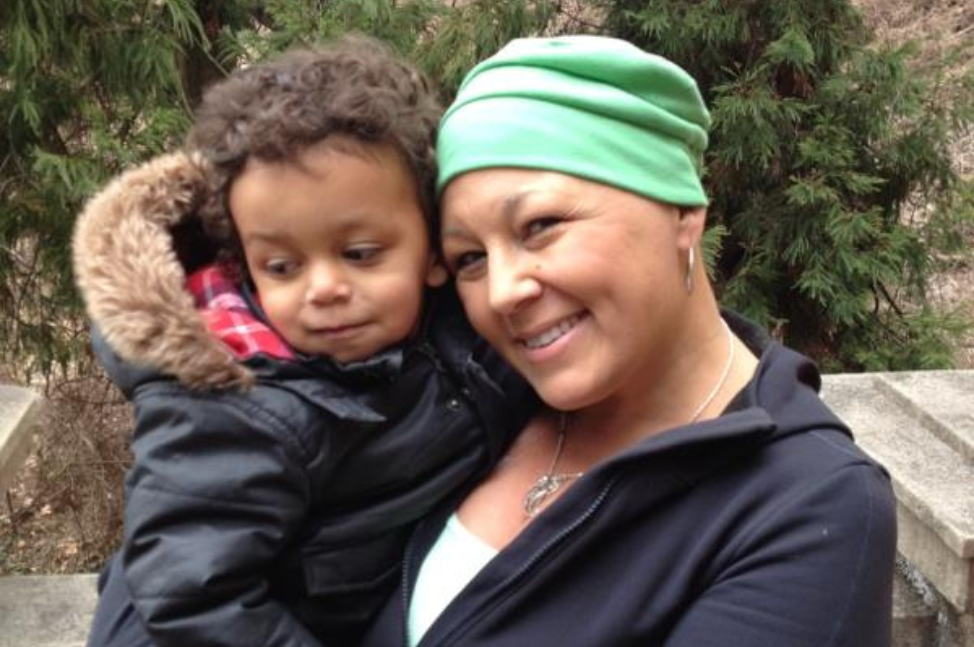As I entered phase 3 of my breast cancer active treatment to start radiation I was surprised by the many different kinds of information being given to patients specifically concerning skin care during treatment. Radiation can be TOUGH on your skin. It took a lot of digging and being somewhat obsessive about researching how to best take care of my skin during treatment. I know I wanted to avoid having my skin burn and peel like so many others have shared with me who have gone through treatment before. Some doctors and radiation oncology nurses are recommending corn starch or petroleum-based products and some recommendations of organic plant-based products like Calendula, Aloe, or Manuka Honey.
I think a lot of the concerns from women undergoing radiation for breast cancer have to do with minimizing skin irritation to the areas of the chest that receive radiation. Too much skin desquamation (peeling) can interrupt or shorten treatment, so it’s important to stay ahead of the game to preserve and protect the skin. As I listened to podcasts with experts from around the world and from highly regarded symposiums like SABCS (San Antonio Breast Cancer Symposium) and also spent countless hours researching what is new for patients, I realized patients are not being kept informed and that standardized care is not standardized.
Areas of information that were so important to patients such as alternate treatment protocols that could shorten your time at radiation to better options for skin care. After much time on online support groups that encompass patients from not only the United States but from around the globe, many touted the success of a newer film-forming silicone gel called STRATA RX. This is not readily available and must be prescribed and filled by a specialty pharmacy, but WOW! The results were nothing short of amazing for me personally. After 5 weeks of radiation and using this product consistently 3 times a day, I only experienced a slightly pink/darkening discoloration to the treatment area of my chest, breast area, and shoulder. No peeling, no burning, virtually no irritation. Ask your radiation oncologist if he or she feels like this could work for you. I insisted (begged) for an Rx for this product and I’m glad I did. The excellent skin response allowed me to start endocrine therapy sooner rather than later since I was not waiting on the skin to heal.
The treatment protocols.
There are two schedules for radiation.
Typical radiation schedules for breast cancer are between 5-6 weeks depending on the type of breast cancer.
But did you know that some advances in radiation therapy mean you might fit the criteria for a condensed schedule? That is a big deal when it comes to missing fewer days at work or not having to pay childcare for yet another appointment, right?!
Janice Lyons, MD, director of Breast Radiation Oncology at UH Seidman Cancer Center explains that some of the latest advances in radiation therapy for breast cancer include hypofractionation (more dose of radiation each day, but fewer days of treatment) and ultra-hypofractionation, shortening radiation therapy to only five treatments could be just as effective.
In fact, studies show that actually the cure rates and chance of “recurrence stayed the same as the conventional 5-6 week course of treatment.
And here’s the good news: according to _______, the cosmetic outcome, quality of life, and pain levels were actually less with a shortened duration of treatment.
Speak to your radiation oncologist to see if you meet the parameters for one of these shortened radiation schedules.
Fewer treatment days mean we can get back to living life, and working sooner and this is one way to reduce the financial burden.
http://www.UHhospitals.org/BreastCancer
According to Frederick Dirbas, MD, Stanford University School of Medicine, Stanford, CA. explains that FLASH radiation or ultra-high dose radiation can induce less normal tissue toxicity. High-energy x-rays are fired so quickly (like flash photography) that motion is frozen and this radiation can be more precisely focused on tumors. This type of ultra-high dose radiation is as effective as conventional radiotherapy in controlling tumor growth.
These are just a few points to consider when starting radiation therapy for breast cancer. Always ask all the questions!
A quote from one of my favorite champions for patient-centered care, Abraham Verghese:
“The Bottom Line: Healthcare reform is about the PATIENT, not the physician.”
Here is a link to one of his interviews.
Be your own advocate. Be your own HERO.
Have a great day and hope this gives you another way you can ArmorUp for LIFE.
Lisa








